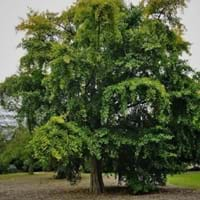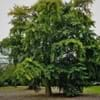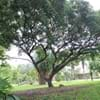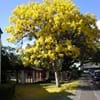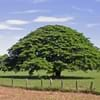Life Span
Perennial
Perennial
Type
Tree
Bulb or Corm or Tuber
Origin
China
Latin America and the Caribbean, Central America, South America
Types
Not Available
Canna Altensteinii, Canna Indica Purpurea
Number of Varieties
Not Available
Habitat
Deciduous forests, Wild, Woods
Subtropical climates, Tropical regions, Warmer regions
USDA Hardiness Zone
4-9
8-11
Sunset Zone
A3, 1a, 1b, 2a, 2b, 3a, 3b, 4, 5, 6, 7, 8, 9, 10, 12, 14, 15, 16, 17, 18, 19, 20, 21, 22, 23, 24
21,22
Habit
Upright/Erect
Upright/Erect
Minimum Height
Not Available
Minimum Width
Not Available
Flower Color
Yellow green
White, Yellow, Red, Orange, Pink, Rose, Salmon
Flower Color Modifier
Bicolor
Bicolor
Fruit Color
Orange, Light Yellow, Tan
Green, Tan, Brown
Leaf Color in Spring
Light Green, Yellow green
Yellow, Red, Green, Purple, Gray Green, Dark Green, Burgundy
Leaf Color in Summer
Green, Yellow green
Light Green
Leaf Color in Fall
Yellow, Gold
Several shades of Green
Leaf Color in Winter
Not Available
Light Green
Leaf Shape
Bi-lobed
Elliptic
Plant Season
Spring, Summer, Fall, Winter
Spring, Summer, Fall
Sunlight
Full Sun
Full Sun, Partial Sun
Type of Soil
Clay, Loam, Sand
Clay, Loam, Sand
The pH of Soil
Acidic, Neutral
Acidic, Neutral, Alkaline
Soil Drainage
Well drained
Average
Bloom Time
Spring
Indeterminate
Tolerances
Pollution, Drought, Salt, Soil Compaction
Drought
Where to Plant?
Ground
Container, Ground, Pot
How to Plant?
Seedlings, Spores, Stem Planting
From bulbs, Seedlings
Plant Maintenance
Medium
Medium
Watering Requirements
Requires watering in the growing season
Keep the ground moist but not water-logged, Requires regular watering
In Summer
Lots of watering
Lots of watering
In Spring
Moderate
Moderate
In Winter
Average Water
Average Water
Soil pH
Acidic, Neutral
Acidic, Neutral, Alkaline
Soil Type
Clay, Loam, Sand
Clay, Loam, Sand
Soil Drainage Capacity
Well drained
Average
Sun Exposure
Full Sun
Full Sun, Partial Sun
Pruning
Remove damaged leaves, Remove dead branches, Remove dead leaves
Remove damaged leaves, Remove dead leaves
Fertilizers
All-Purpose Liquid Fertilizer
All-Purpose Liquid Fertilizer
Pests and Diseases
Red blotch
Red blotch
Plant Tolerance
Drought
Drought
Flowers
Insignificant
Showy
Flower Petal Number
Single
Single
Foliage Texture
Medium
Bold
Foliage Sheen
Matte
Not Available
Attracts
Birds, Butterflies, Squirrels
Butterflies, Insects
Allergy
Abdominal pain, Nausea, Throat itching, Vomiting
Not Available
Aesthetic Uses
Bonsai
Beautification, Bouquets, Landscape Designing, Showy Purposes
Beauty Benefits
Acne, For treating wrinkles, Remove blemishes
Not Available
Environmental Uses
Air purification, Nesting sites for birds, Shadow Tree, soil erosion prevension on hill slopes
Air purification
Medicinal Uses
Aging, Alzheimer’s Disease, anti-allergy, anti-inflammatory, Blood anti-coagulant, Diabetes
Diuretic
Part of Plant Used
Bark, Leaves, Seeds
Flowers, Leaves, Root, Seeds
Other Uses
Can be made into a herbal tea, Condiment, Cosmetics, Medicinal oil
Decoration Purposes, Showy Purposes, Used As Food, Used as Ornamental plant, Used in paper industry
Used As Indoor Plant
Sometimes
Yes
Used As Outdoor Plant
Yes
Yes
Garden Design
Feature Plant, Shade Trees, Street Trees
Bedding Plant, Container, Feature Plant, Foundation, Mixed Border, Tropical, Water Gardens
Botanical Name
GINKGO biloba 'Chi-chi'
CANNA
Common Name
Ginkgo
Canna, Canna Lily
In Hindi
बालकुवारी
भंग लिली
In German
Tempelbaum, Ginkgobaum
Canna Lilie
In French
Arbre sacré des temples d'Asie, Arbre aux mille écus
Canna
In Spanish
Gingo, Árbol de oro
Canna lirio
In Greek
Γιγκο, Γκίνγκο
Canna κρίνος
In Portuguese
Nogueira-do-Japão
Canna
In Polish
Miłorząb chiński, Miłorząb dwudzielny
Canna lilia
In Latin
Gingko
Canna lilium
Phylum
Ginkgophyta
Embryophyta
Class
Ginkgoopsida
Liliopsida
Order
Ginkgoales
Zingiberales
Family
Ginkgoaceae
Cannaceae
Clade
Cycad
Angiosperms, Commelinids, Monocots
Tribe
Not Available
Not Available
Subfamily
Not Available
Not Available
Number of Species
Not Available
Season and Care of Ginkgo and Canna
Season and care of Ginkgo and Canna is important to know. While considering everything about Ginkgo and Canna Care, growing season is an essential factor. Ginkgo season is Spring, Summer, Fall and Winter and Canna season is Spring, Summer, Fall and Winter. The type of soil for Ginkgo is Clay, Loam, Sand and for Canna is Clay, Loam, Sand while the PH of soil for Ginkgo is Acidic, Neutral and for Canna is Acidic, Neutral, Alkaline.
Ginkgo and Canna Physical Information
Ginkgo and Canna physical information is very important for comparison. Ginkgo height is 460.00 cm and width 240.00 cm whereas Canna height is Not Available and width Not Available. The color specification of Ginkgo and Canna are as follows:
Ginkgo flower color: Yellow green
Ginkgo leaf color: Light Green and Yellow green
Canna flower color: White, Yellow, Red, Orange, Pink, Rose and Salmon
- Canna leaf color: Yellow, Red, Green, Purple, Gray Green, Dark Green and Burgundy
Care of Ginkgo and Canna
Care of Ginkgo and Canna include pruning, fertilizers, watering etc. Ginkgo pruning is done Remove damaged leaves, Remove dead branches and Remove dead leaves and Canna pruning is done Remove damaged leaves and Remove dead leaves. In summer Ginkgo needs Lots of watering and in winter, it needs Average Water. Whereas, in summer Canna needs Lots of watering and in winter, it needs Average Water.
